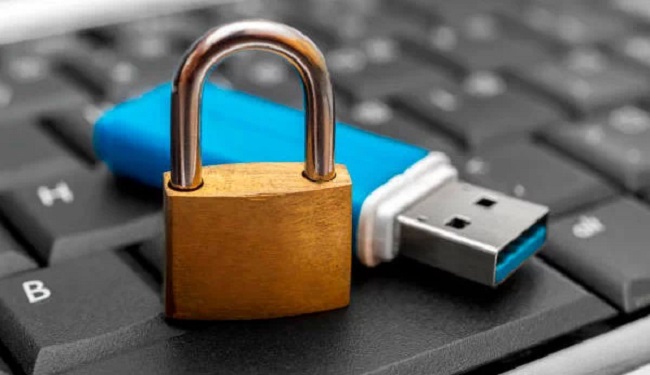It’s simple to format a USB drive on your computer. The upside is that this is one of the few physical activities that can really increase your storage capacity. When done properly, it can also assist disinfect a USB drive of any viruses or malware.
On the other hand, Windows’ inability to format a USB device with write-protection enabled means that there are situations when this is not so simple.

How to Remove Write Protection From USB Drive in Windows 10
The physical lock and virtual attribute change probably account for 99% of the write protection on USB flash drives, pens, and SD cards.
In order to fix the “how to remove write protection from usb drive in windows 10“ issue and successfully remove write protection, we need to understand its root cause.
Method 1. Remove Write Protection with Physical Lock Switch
When the physical switch on a USB drive or an SD card is locked, the drive may become read-only on all connected computers and devices. Let’s have a look at how to disable SD card/USB security using the physical switch:
Step 1: Find the actual ON/OFF switch on your USB or SD card and flip it to the OFF position.
Step 2: Insert the unlocked memory stick or secure digital card into your computer. See whether the write-protected flag goes away.
In the event that your USB doesn’t have a switch or the system continues to warn that the USB is write-protected, please refer to the second method below.
Method 2. Remove Write Protection from USB via Diskpart Command
To enable writing, this choice removes the drive’s read-only status. Drive types including internal, external, USB, and even SD are supported. Let’s see how the Diskpart command can help us resolve this issue:
Step 1: One must first launch a run dialog by pressing the Windows key plus R and then typing cmd into the resulting text field. Pressing this button will activate the command prompt.
Step 2: Then, at the Command Prompt prompt, type diskpart and hit Enter.
Step 3: The available disks can be viewed by typing list disk into the prompt and hitting Enter.
Step 4: Then, is to pick disk 2 by typing “select” and pressing Enter. Substitute the device number without write protection for 0.
Step 5: Enter “attributes disk clean readonly” and press Enter.
Step 6: After you have finished removing the write protection, type exit to exit Diskpart.
Method 3. Remove Disk Write Protection from Using Registry Editor
Write-protected failures on USB, SD, or internal/external HDD/SSD drives can easily be fixed with Registry Editor. Since it is a difficult technique, it is not recommended for those who lack confidence in their abilities.
Altering the registry incorrectly can result in a wide variety of problems. Use caution when attempting to disable Windows 11 write protection using the following steps:
Step 1: Link your portable media with write protection to the computer.
Step 2: Enter regedit into the Run box and hit Enter to open the Registry Editor.
Step 3: Navigate to the HKEY LOCAL MACHINE key and then expand the System subkey.
Step 4: Select the Current Control Set tab, and finally, select the Control tab.
Step 5: Set the DWORD value for Storage Device Policies to 0. After that, select the OK button.
Step 6: Close Registry Editor and restart the computer.
We recommend waiting for the computer to restart. Next, make sure your gadget can be reached.
Method 4. Edit Registry
Step 1: Hit the “Windows + R” keys on your keyboard. In the Run dialogue box that appears, type “Regedit,” and then press Enter or choose “OK” to launch the Registry Editor.
Step 2: Open the left pane’s entries and find the path there.
Step 3: Create a new key by right-clicking the Control (folder) key and selecting “New.” This new key is called StorageDevicePolicies.
Step 4: Choose the freshly produced key by right-clicking anywhere in the white area of the right-hand window. For the “New” drop-down, pick DWORD (32-bit) Value. Construct a new DWORD and label it WriteProtect.
Step 5: Double-click the newly created DWORD to set its value to 0. To make changes, select “OK.”
Step 6: Close Registry Editor and then restarting your computer.
Method 5. Disable BitLocker Encrypted
With BitLocker enabled, your portable storage device will encrypt your data for security purposes. If you’ve put BitLocker on a USB drive, you won’t be able to access its contents without the correct password or recovery key.
You will need to reformat the hard drive if you have exhausted all other options. To unprotect a write-protected USB drive on a computer, do as follows:
Step 1: Open “File Explorer” and look for the storage device you want to access. If your device’s icon features a padlock, BitLocker is enabled.
Step 2: Right-click on the icon, and then pick “Manage BitLocker” from the drop-down menu that appears. Stepping into this action brings up the BitLocker Drive Encryption window, which details the encrypted and non-encrypted storage devices.
Step 3: Disable BitLocker, right-click the encrypted USB drive and choose “Turn off BitLocker.”
Step 4: In order to access the recovery key, you must first input the password or select an alternative. This status means that BitLocker is currently disabled while the device is being decrypted.
Step 5: If the issue persists after disabling BitLocker, try copying to the USB stick again.
Conclusion
The write-protection switch can be found on the side or bottom of some USB flash devices. If you need to access files on a shared computer but are concerned about viruses, the write protection switch can help.
Put the switch in the locked position if your gadget has one. All files and the whole device will be made read-only as a result of this change. This will help you to how to remove write protection from usb drive in windows 10.
















